In the 19th century, the world of medicine changed dramatically. As more people gained access to medical treatments, it was like opening Pandora’s box. This shift brought both helpful advancements and bizarre, sometimes dangerous, quackery. Many unqualified individuals began to sell dubious remedies, often without any scientific backing.
Some of these “cures” were harmless hoaxes, but many were downright dangerous. They often contained addictive substances and life-threatening ingredients. For example, one of the most notorious products of this era was arsenic-laden soaps and cosmetics. Arsenic was believed to improve complexion and give a pale, fashionable look. People willingly used these products, unaware of the risks they posed.
Another dangerous trend was the use of radium. This glowing substance found its way into toothpaste and cosmetics, promising a radiant smile and flawless skin. People were fascinated by its glow and didn’t question its safety. Unfortunately, radium is highly radioactive and can cause serious health problems, including cancer.
At the same time, marketers promoted “Asthma Cigarettes” as a remedy for respiratory issues. These cigarettes contained a mix of herbs and narcotics, including the highly addictive stramonium. Many people suffering from asthma turned to these products, believing they would find relief. Instead, they often found themselves facing addiction and worsening health.
Quackery also took the form of various tonics and elixirs. Many of these products claimed to cure everything from headaches to chronic illnesses. They were often advertised as “miracle cures,” promising quick fixes without any real evidence. Some of the ingredients in these tonics were not only ineffective but also harmful.
As we look back at these bizarre and dangerous remedies, we can’t help but feel grateful for modern regulations. Today, there are strict guidelines in place to protect consumers from false claims. Scientific advancements have also improved our understanding of health and medicine.
#1 Asthma Cigarettes
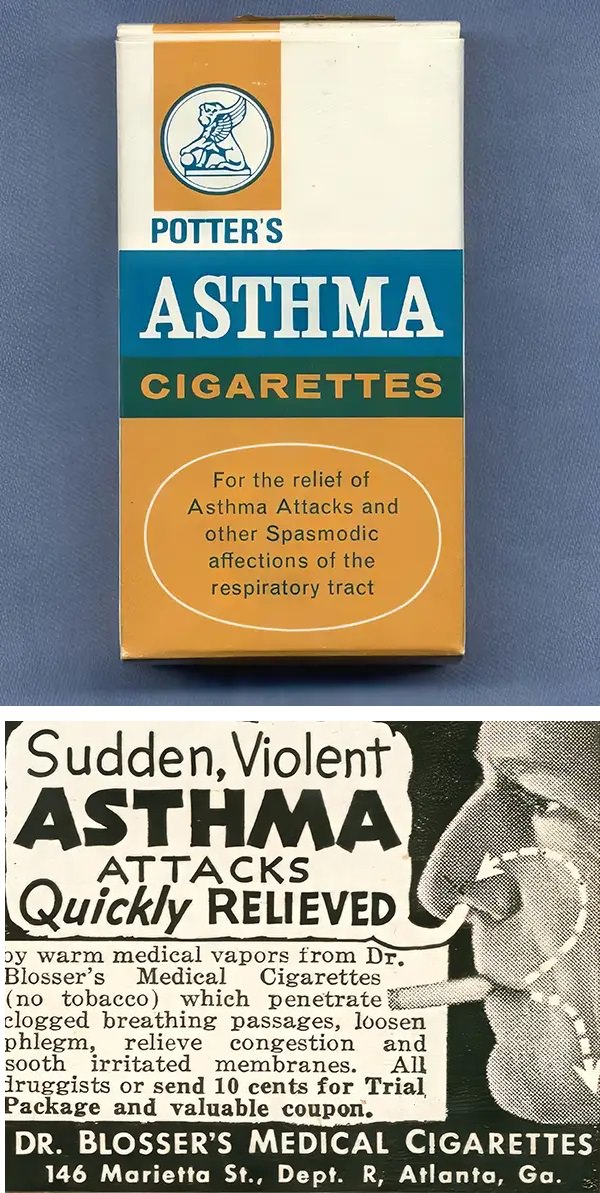
Asthma cigarettes emerged as a peculiar treatment for respiratory ailments in the late 19th and early 20th centuries. These cigarettes contained a mixture of herbs and narcotics, often including atropine. Atropine, while temporarily opening the airways and providing relief from asthma symptoms, also caused unpleasant side effects such as lightheadedness, nausea, hallucinations, and a rapid heart rate. Despite these adverse effects, products like Potter’s Asthma Cigarettes, Himrod’s Cure for Asthma, and Dr. Kellogg’s Asthma Remedy gained popularity. Even renowned figures like Marcel Proust, who suffered from asthma, documented his experiences with these cigarettes, describing the discomfort and relief they brought during his attacks.
#2 Potter’s Asthma Remedies.
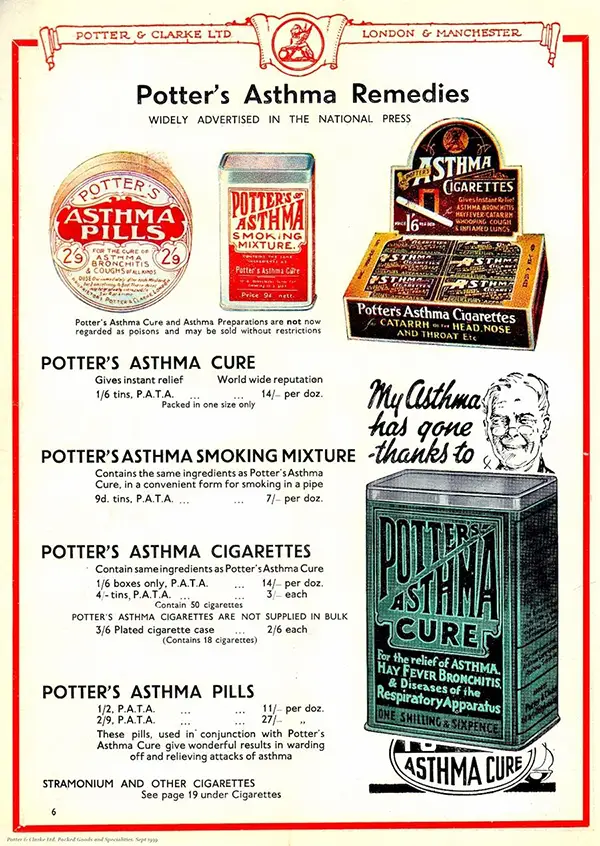
Potter's Asthma Remedies, a popular product in the late 19th and early 20th centuries, offered a peculiar solution for asthma sufferers. This remedy typically came in the form of a powder containing stramonium, a plant-derived substance with bronchodilator properties. Users would burn the powder and inhale the smoke, aiming to relieve asthma symptoms. However, stramonium also possessed hallucinogenic effects and could cause adverse reactions like rapid heart rate, dilated pupils, and confusion.Despite these potential risks, Potter's Asthma Remedies gained popularity due to the perceived relief it provided, highlighting the desperation of individuals seeking solutions for their respiratory ailments in an era of limited medical understanding.
#3 Radioactive Toothpaste
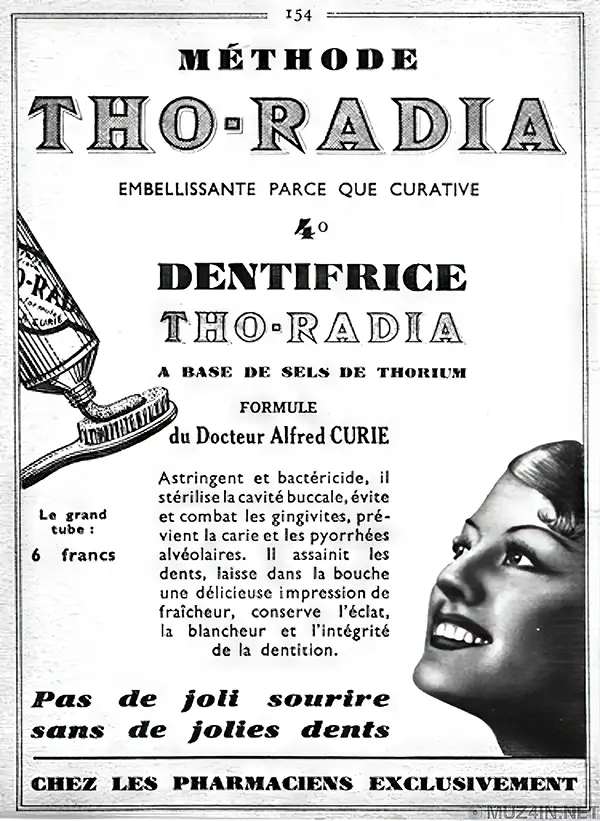
Radioactive toothpaste emerged as a bizarre and dangerous fad in the early 20th century, capitalizing on the then-novel concept of radiation. Proponents believed radiation could kill bacteria and improve oral hygiene. One notorious example, "Thorium Toothpaste," contained thorium chloride, a radioactive element. This period also saw radioactive elements incorporated into various consumer goods, purportedly enhancing health and beauty. However, the truth was far more sinister. Exposure to radiation led to severe health complications, including anemia, bone fractures, necrosis of the jaw, and ultimately, a painful death.
#4 Arsenic soap for clear complexion.
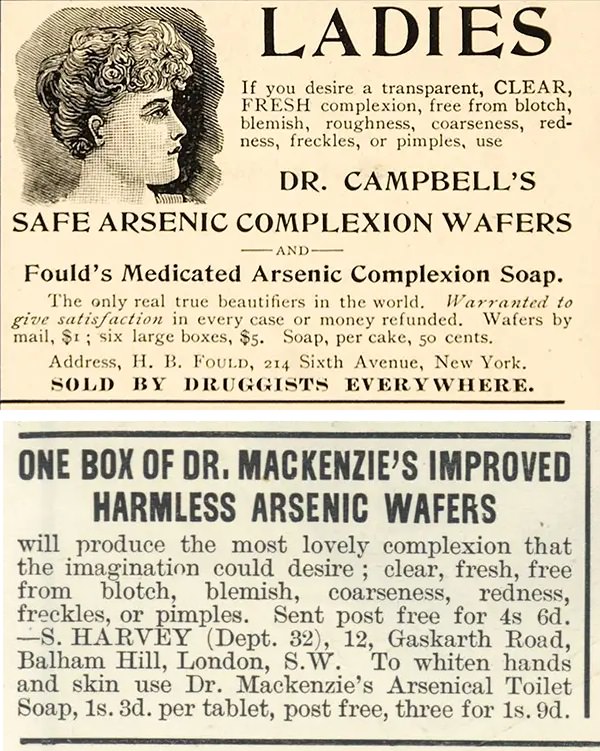
Arsenic soap, a dangerous concoction from the 19th and early 20th centuries, capitalized on the misguided belief that arsenic could improve complexion. Marketed as a beauty aid, this soap promised a clear and pale complexion, adhering to the fashionable aesthetic of the time. Women, driven by societal pressures and unattainable beauty standards, incorporated this toxic substance into their routines, unaware of the severe health risks it posed. Arsenic, a known poison, led to various ailments, from skin irritations and hair loss to organ damage and even death. This dark chapter in beauty history serves as a stark reminder of the dangers of unchecked trends and the importance of understanding the ingredients we put on our bodies.
#5 Dr. Williams Pink Pills
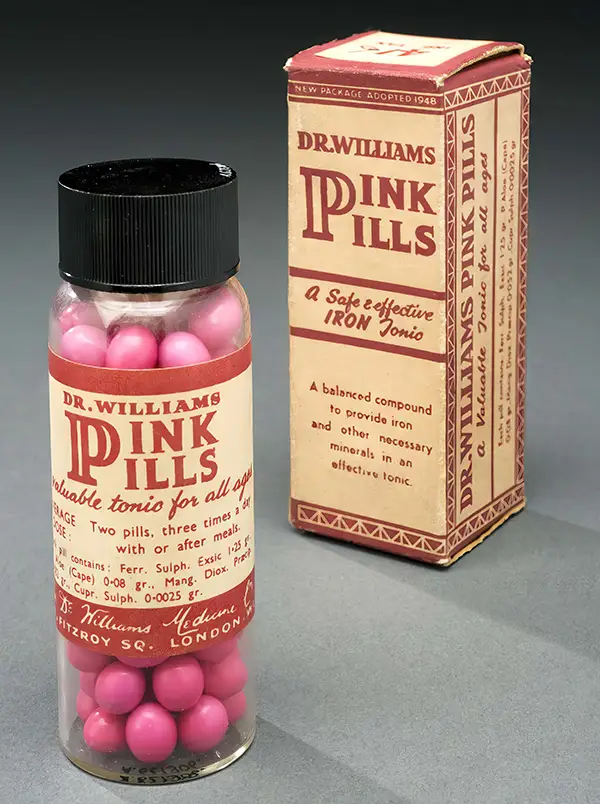
Dr. Williams' Pink Pills for Pale People, a popular patent medicine promised a cure-all solution for various ailments. These pink sugar-coated pills, containing ferrous sulfate and magnesium sulfate, were marketed as a remedy for a wide range of conditions, from "St. Vitus' Dance" (chorea) to fatigue and even pale complexions. The manufacturer, Dr. Williams Medicine Company, heavily promoted the pills through aggressive advertising campaigns, preying on the desperation of individuals seeking relief. However, a 1909 analysis revealed the pills' questionable quality, noting careless preparation and oxidized iron sulfate. This discovery highlighted the dubious nature of many patent medicines of the time, offering false hope and potentially harmful consequences to unsuspecting consumers.
#6 Tampons Soaked in Opium
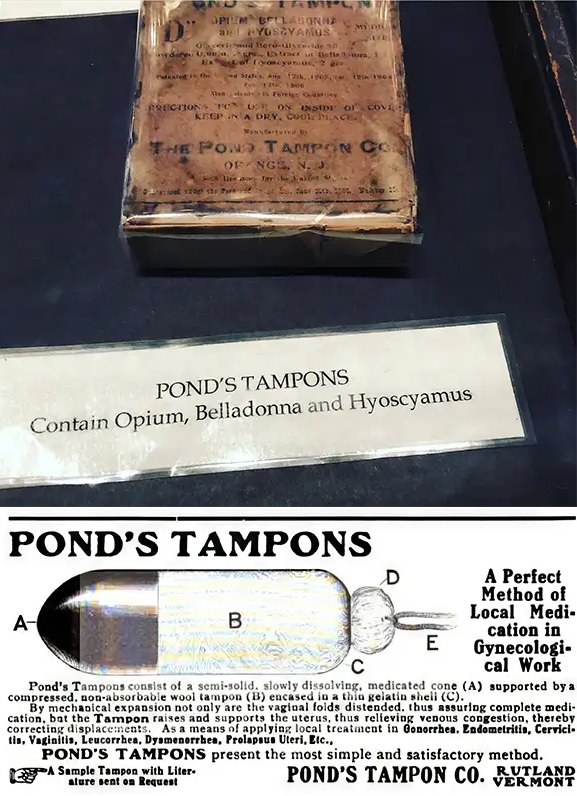
Tampons soaked in opium were a peculiar and dangerous product marketed as a remedy for various female ailments. These tampons, containing a mixture of opium and other ingredients, were intended for insertion to alleviate menstrual cramps and nervous disorders. Patented in 1902 by a Vermont surgeon, the design included an absorbent material that would expand within the body, releasing the opium. This practice, while seemingly providing temporary relief, exposed women to the highly addictive and potentially harmful effects of opium. The lack of regulation and understanding of addiction at the time led to widespread misuse and dependence on these products. This historical example serves as a stark reminder of the risks associated with unregulated medical practices and the importance of informed consent in healthcare.
#7 Wine and Cocaine Cocktails
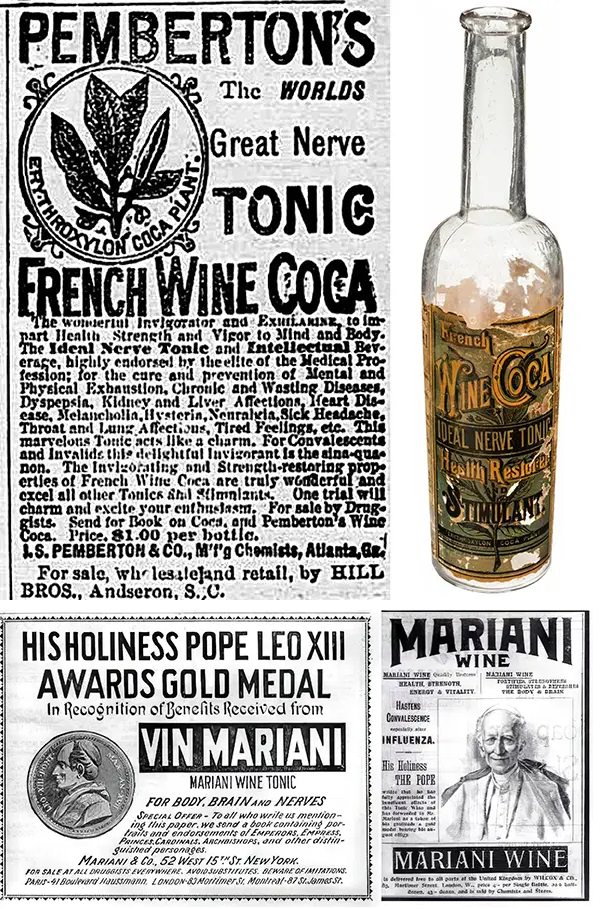
Wine and cocaine cocktails emerged as a peculiar and dangerous trend in the late 19th and early 20th centuries. These concoctions, often combining wine with cocaine, were touted for their stimulating and invigorating properties. Cocaine, then considered a wonder drug, was believed to provide an energy boost and alleviate ailments like headaches and fatigue. These cocktails were often consumed in social settings and even prescribed by some physicians. However, the addictive nature of cocaine and its detrimental health effects were not fully understood at the time. This fad ultimately contributed to the growing cocaine epidemic, highlighting the dangers of unregulated substances and the importance of scientific understanding in medical practices.
#8 Toilet Masks for Victorian Women
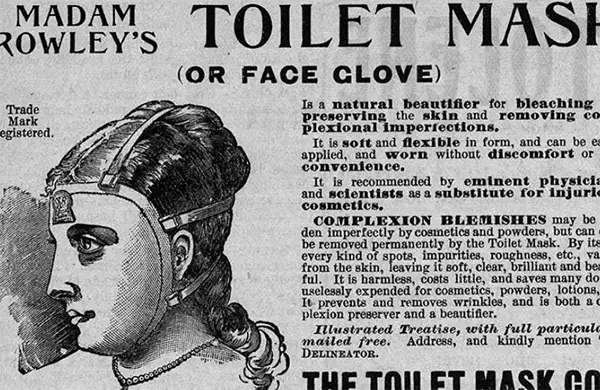
Toilet masks, a peculiar accessory of the Victorian era, served a practical purpose in the face of unsanitary bathroom conditions. These elaborate masks, often adorned with intricate designs, were worn by women during their visits to the toilet. The primary function was to protect the wearer's delicate face from the noxious fumes and odors that permeated poorly ventilated and inadequately sanitized Victorian bathrooms. Constructed from fabric, often with layers of gauze or other materials, these masks acted as a rudimentary filter, attempting to mitigate the unpleasant smells that could cause discomfort and even nausea. This historical practice highlights the challenges faced by women in maintaining hygiene and comfort in an era of limited sanitation infrastructure.
#9 Snake Oil
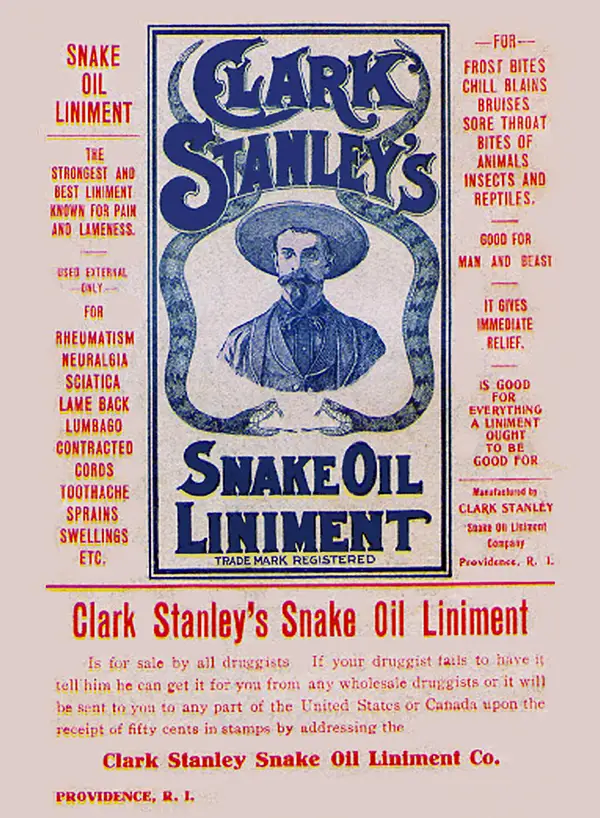
Clark Stanley, the self-proclaimed "Rattlesnake King," peddled his infamous "snake oil" as a cure-all elixir. Claiming to have learned the secrets of snake oil from a Hopi medicine man, Stanley's concoction captivated audiences at medicine shows and the 1893 World's Columbian Exposition. However, his claims were ultimately exposed as fraudulent in 1916 when the Pure Food and Drug Act revealed his snake oil contained no actual snake oil, but rather a mixture of mineral oil, beef fat, red pepper, and turpentine. This revelation not only tarnished Stanley's reputation but also solidified the term "snake oil salesman" as synonymous with fraudulent and deceptive practices in the medical field.
#10 High Heels Orthopedic Shoes
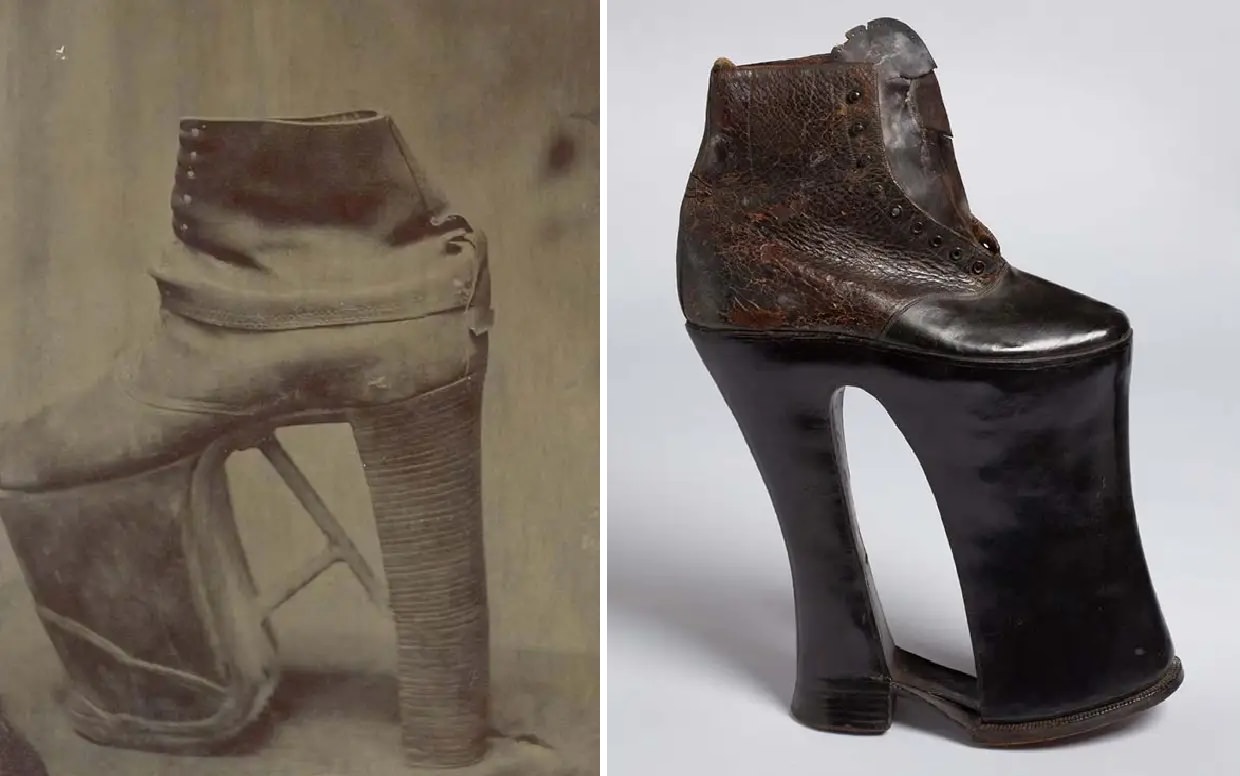
High-heeled orthopedic shoes emerged in the late 1800s as a peculiar blend of fashion and pseudo-medical intervention. Marketed as "corrective" footwear, these shoes not only provided height to complement the era's heavy dresses but also claimed to improve posture and even reshape the foot. With little regulation from the Federal Trade Commission until the 1940s, companies freely touted their shoes as "scientifically recommended" and "doctor's best heels," dismissing the physical strains of sky-high heels as minor inconveniences on the path to better health. These shoes were specifically designed for individuals with orthopedic issues, featuring elevated soles or heels to address foot deformities or leg length discrepancies. However, some designs were clearly painful and ineffective, highlighting the questionable nature of these "corrective" claims. This historical trend reveals the intersection of fashion and medicine, where societal expectations and the desire for physical improvement often led to questionable and potentially harmful practices.


